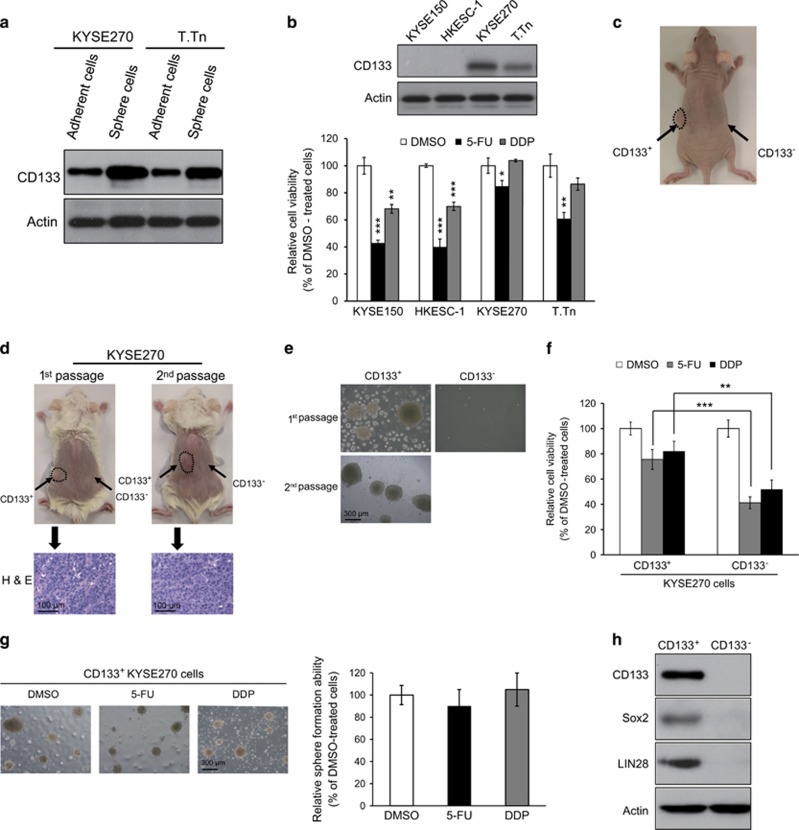Figure 4.
CD133+ ESCC cells possessed increased abilities to self-renew, initiate tumors, and resist chemotherapeutic drugs. (a) Sphere-forming ESCC cells and adherent counterparts were compared for expressions of CD133 by western blot. (b) KYSE150, HKESC-1, KYSE270 and T.Tn cells with different endogenous CD133 expression levels as determined by western blot (upper panel) were treated with 5-FU (5 μm), DDP (20 μm), or DMSO for 72 h, and cell viability determined by MTT assay (lower panel). (c) Representative example of nude mice 60 days after subcutaneous inoculation of sorted CD133+ (left flank) and CD133− (right flank) KYSE410 cells. See also Supplementary Table S2. (d) About 5000 CD133+ and CD133− cells were sorted from KYSE270-derived tumor xenografts and compared for in vivo tumorigenicity in NOD/SCID mice (left panel). The procedure was repeated for CD133+ and CD133− cells resorted from tumors derived from CD133+ KYSE270 cells (right panel). Hematoxylin and eosin (h and e) stained sections of primary and secondary CD133+ KYSE270-derived tumors showed similar morphology. (e) Comparison of sorted CD133+ and CD133− KYSE270 cells for ability to initiate and form spheres over serial passages. (f) Sorted CD133+ and CD133− KYSE270 cells were treated with 5-FU (10 μm) or DDP (40 μm) for 72 h, and their drug sensitivity compared using MTT assay. (g) CD133+ KYSE270 tumor spheres were resistant to 5-FU (10 μm) and DDP (40 μm) treatments. (h) Western blot analysis of CD133, sox2 and LIN28 in sorted CD133+ and CD133- KYSE270 cells. Actin was used as internal control. Bars, s.d.; **P<0.01; ***P<0.001.

